The rituals are the most well-known aspect of Hindu wedding traditions. It is a complete package of pleasure and festivity, from using vibrant colours for décor and rasams to royal wedding attire. These marriages are beautifully arranged with loved ones and are richly cultural. On the other hand, Maharashtrian weddings are simple yet elegant. Furthermore, it is important to take note of every short detail of the wedding. Therefore, the first thing that comes to mind while attending a Marathi wedding is “Simple is Beautiful.” Maharashtrian wedding rituals are all about pujas and vachans that take place throughout the wedding. These rituals are similar to most Hindu Weddings, but culturally it has their own importance. So, let’s have a look at these Maharashtrian wedding rituals that are all meant for finding joy in the little things.
Pre-Wedding Rituals
Sakhar Puda
Like every wedding ritual, Sakhar Puda is the first wedding function in a Maharashtrian wedding. A North Indian wedding has ‘Sagai’ whereas Maharashtrian culture calls this engagement ceremony as Sakhar puda. In this official engagement, the groom’s mother applies haldi-kumkum on the bride’s forehead along with special gifts such as a saree, jewellery, and sweets as a blessing. In this ceremony, the bride and groom also exchange rings and it is generally celebrated a few days prior to the wedding.
Kelvan
Kelvan is one of the most important rituals in a Maharashtrian wedding. It is one of the Maharashtrian wedding rituals that is performed a few days before the wedding. On this day, both families pray to their kuldevta for a happy and positive wedding. This ritual is followed by lunch and is filled with lots of fun and bonding.
Muhurat Karane
After the engagement and other wedding rituals, the pre-wedding rituals begin, which are generally a month before the wedding. The bride’s mother invites ‘Suhasnies’ or the married woman, to be a part of this auspicious day. The women start preparing turmeric powder and sandege (pulses and spice powder), and they also roll papads that can be used in the wedding. The ritual doesn’t stop here as the family starts shopping for the bride and holds a ‘Rukhvat’ by displaying all the utensils, sweets, sarees, lehengas, and sweets.
Wedding Invitation
Lord Ganesha is the epitome of good luck and positivity. Therefore, the first wedding invitation card is offered to Lord Ganesha. Bappa is an integral part of the Maharashtrian wedding ritual. Wedding invitations set the tone for a wedding, so you should make sure they are memorable and appealing to your guests. There are several inventive and distinctive ways to make your wedding invitation visually appealing rather than keeping it straightforward.
Haldi Ceremony
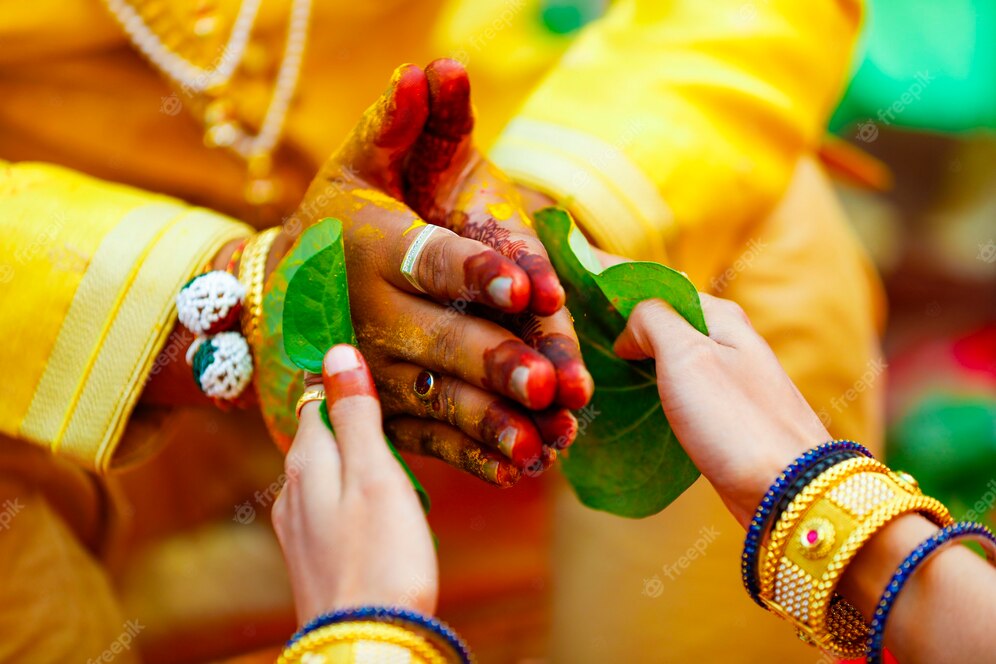
Haldi chadavane or simply a Haldi Ceremony is a common ritual among most Indian weddings. The Suhasnies or the married woman are the first ones to apply turmeric paste i.e., haldi. The haldi is applied on the forehead, shoulders, hands and feet. The same haldi paste is sent to the bride’s house and the closed ones are invited to attend the function.
The Wedding Rituals
Chura Ceremony
Chura or Churis are essential shringaar for the bride. The bangles play a significant role in a wedding. Maharashtrian brides wear green bangles along with a set of gold or pearl ones. Every culture has its own importance and hence the green colour in Maharashtrian culture signifies life, creation and fertility.
Ganpati Puja, Devdevak and Gurihar Puja
As mentioned earlier, Maharashtrian wedding rituals are all about oaths and pujas. Lord Ganesha is worshipped by the couple and the family for a bright future. Furthermore, the deity or the kuldevta is invited by the Devdevak to bless the couple. On the other hand, the bride worships and seeks the blessings of Devi Parvati for a cheerful life. In the same puja, the maternal uncle gifts her a precious item which she then offers to the goddess.
Punyavachan and Seemanpuja
Every individual needs a blessing for a good start. Therefore, the family of the bride take her to the wedding and then everyone blesses the daughter on Punyavachan. On the other hand, the groom is welcomed by the bride’s mother with aarti and sweets. Additionally, the bride’s mother washes the feet of the groom and applies tilak on his forehead.
Antarpat
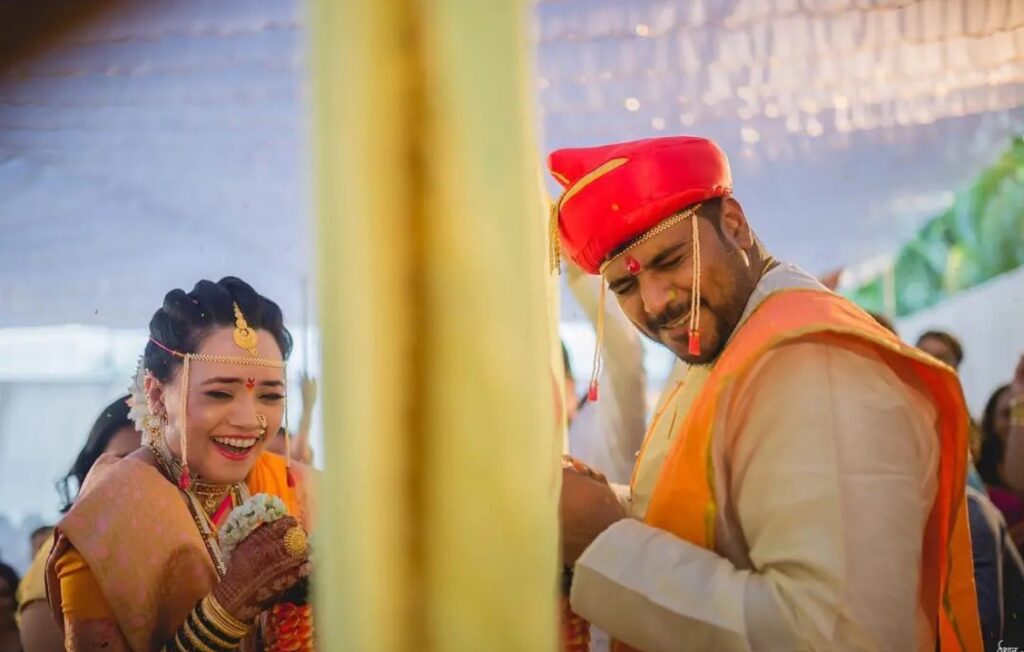
Indian weddings are all about rituals. During the Antarpat, an ornamental thread called mundvalya is tied on the bride and groom’s heads. After the mundvalya is tied on the groom’s head, he sits on the seat. It is an interesting ritual as the silk shawl is hung between the bride and groom which restricts both of them to see each other followed by a mantra.
Sankalp
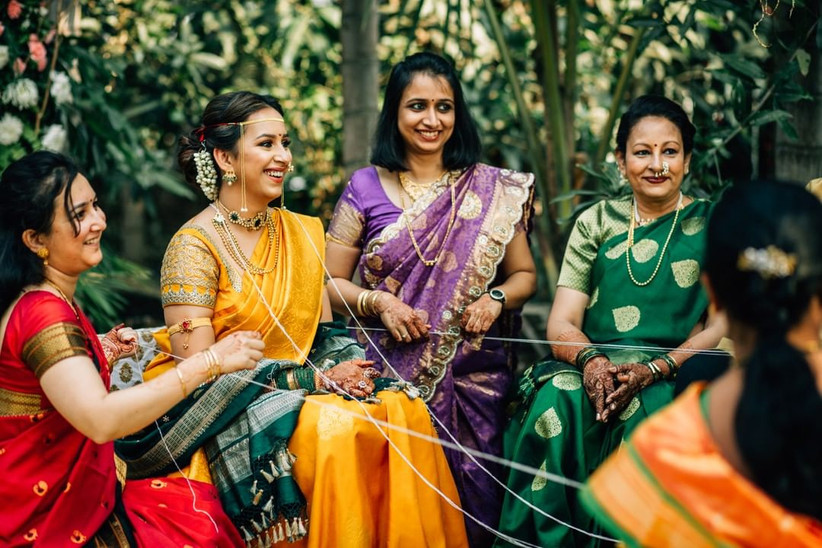
One of the most important and loveable Maharashtrian wedding rituals, Sankalp is done after the shawl is removed and the priest completes reciting the mantras. During this ceremony, the couple look at each other after the shawl is removed and the family celebrates this moment by showering akshata i.e., the broken rice grains. The couple also exchange garlands during this ritual.
Kanyadan
Kanyadan is one of the prominent rituals in Indian weddings. During this ritual, the bride’s father gives the bride’s hand to the groom and blesses them for a healthy and lifelong marriage.
Lajahoma
The bride offers grains to the havan, or holy fire while chanting three mantras, which the groom repeats. The bride quietly recites the fourth mantra. Here, the bride’s parents worship the couple as the avatars of Lord Vishnu and Goddess Lakshmi. Just after this ritual, the couple tie turmeric thread to each other and the groom ties Mangalsutra on the bride’s neck and puts SIndoor on her head.
Saptapadhi
Saptapadhi refers to the seven vows of the wedding. This is usually known as Saat Phere in other states. The couple encircles the holy fire and performs the ritual.
Karmasampati
Under this wedding ritual, the couple performs Laxmi Pujan and worships until the fire of the havan is put off. Furthermore, this rasam is extremely joyous as the groom gives a new name to the bride. The bride’s brother also teases the groom and reminds him of his marital duties. In the end, the couple takes the blessings of their elders.
Post-Wedding Rituals
Varat
For those present, it is one of the most significant and poignant times. Everyone is moved to tears at this time, not just the bride and her family. The bride formally leaves her family and bids them farewell by joining the groom and his family. It is a tearful, emotional moment.
Griha Pravesh
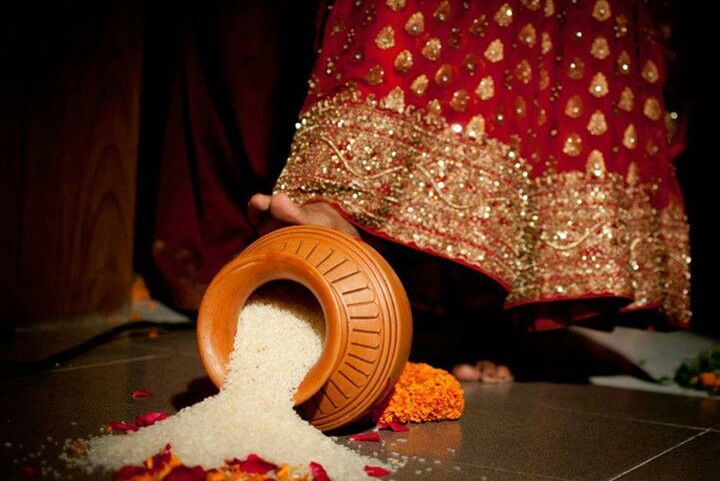
The bride goes to the groom’s home right after Bidaai. The newlywed will be greeted by the groom’s family here, who will refer to her as “Goddess Lakshmi,” a representation of beauty, luck, and love. The bride must also perform “Grah Pravesh,” a ritual that marks the beginning of their happily-ever-after by having her leave her footprints on the ground after kicking a small pot of rice and stepping into a crimson colour made of water and kumkum.

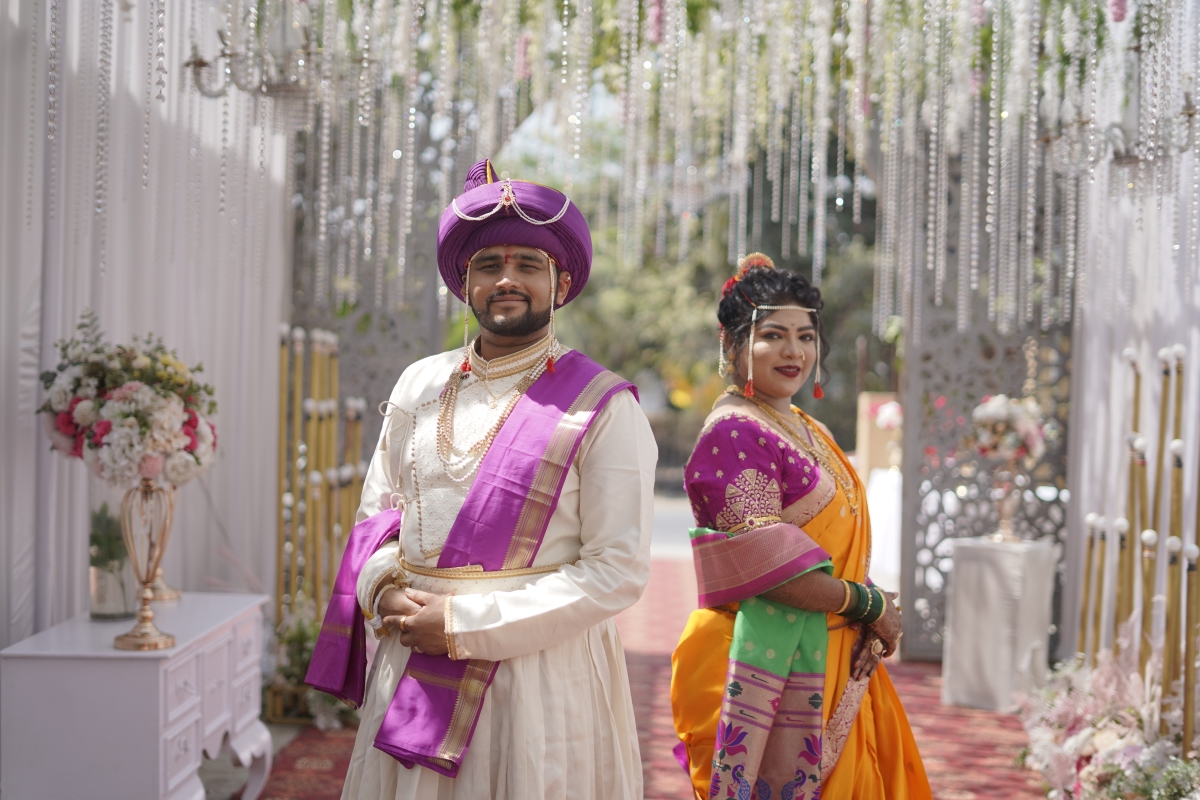
There is clearly a bundle to identify about this. I think you made some good points in features also.
Thank You!
I’m really impressed with your writing skills and also with the layout on your blog. Is this a paid theme or did you customize it yourself? Anyway keep up the nice quality writing, it is rare to see a nice blog like this one today..
Thank You.